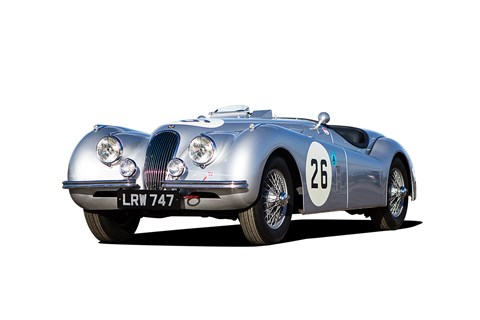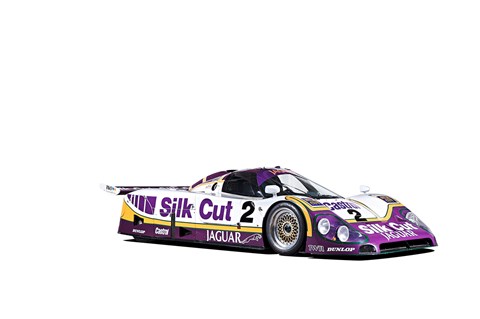► The Jaguar XJ220 kicks off our top 25?
► Gavin Green remembers the 217mph supercar
► The ballistic basket case
We did 207mph – Martin Brundle and me – just a few minutes after getting into the cocooning cockpit of the XJ220. The ground-effect aerodynamics sucked the big Jaguar hard down into the Nardo blacktop, the twin-turbo V6 wailed bloody murder behind us, my helmet rattled incessantly against the glass sunroof (Nardo feels surprisingly bumpy when you’re doing more than 200mph) and next to me Brundle talked as he drove – but such was the engine scream, wind howl and tyre slap, I couldn’t hear a thing he said.
It was the summer of 1992. Later, without me in the car, Brundle – then Michael Schumacher’s Benetton F1 team mate – lapped at 217.1mph. Hail, the fastest production car in the world, lapping the fastest test track in Europe!
The XJ220 wasn’t simply fast. It was also one of the most eye-catching and beautiful of supercars, a long, graceful sliver of sleek aluminium. A week or so later, when I drove it on public roads, I cursed its length and girth. Its expansive footprint – simply too big for a two-seater -– hampered agility. More impressively, I vividly recall its astonishingly brutal acceleration and its explosive leap even from cruising speed.
If it had been true to its original concept, it would have been even better. It was designed for a quintessential V12, not a coarse V6 (based on the Metro 6R4 rally engine). It was also originally designed for Group B racing, although it never turned a wheel in competitive anger. Never mind, it was the last Jaguar supercar and like all great Jaguars, it blended grace with astonishing pace. GG
The specs
Produced: 1992-1994
Price at launch: £415,000
Value now: £300,000
Engine: 3498cc bi-turbo V6, 542bhp, 475lb ft
Performance: 3.9sec 0-60mph, 217mph
Other must-drive Jaguars we cherish

XK120 (1948-1954)
The first ‘modern’ British car and an amazing slice of Hollywood glamour from post-war austerity Britain. Largely responsible for Britain’s export boom in the ’50s.
D-type/XKSS (1954-1957/1957)
The D-type brought aviation construction to four wheels, dominated Le Mans through the mid-1950s and made dorsal fins a thing of wonder. XKSS a re-bodied, road-going Le Mans winner and arguably Britain’s greatest-ever sports car.
MkII saloon (1959-1967)
XK power, disc brakes and looks to die for – Britain invented the sports saloon with the impossibly cool MkII.

XJR-9 (1988-1989)
As good as it gets for a generation of Le Mans fans – that 7-litre V12, those covered rear wheels, the Silk Cut livery… Fast and, according to Martin Brundle, who won the 1988 title in an XJR-9, the best-sounding racer ever.
Drive brilliant Jaguars!
You can get behind the wheel of an XK120, C-type, D-type and MkII thanks to Jaguar’s Heritage Driving programme. Packages start from less than £200 but £2000 buys the Grace & Pace full-day experience, with all of the above and more. Details at heritagedriving.co.uk